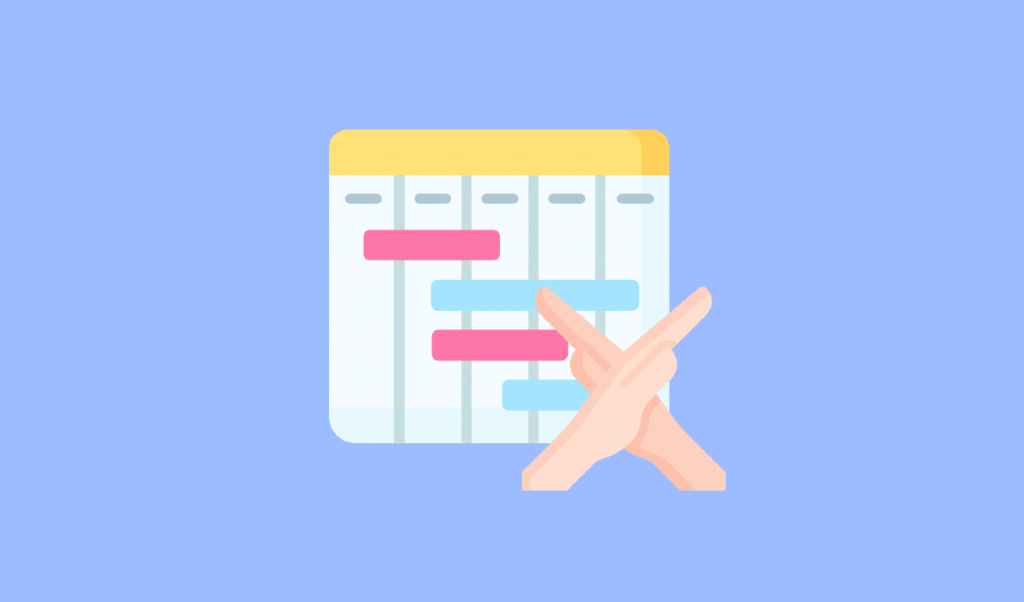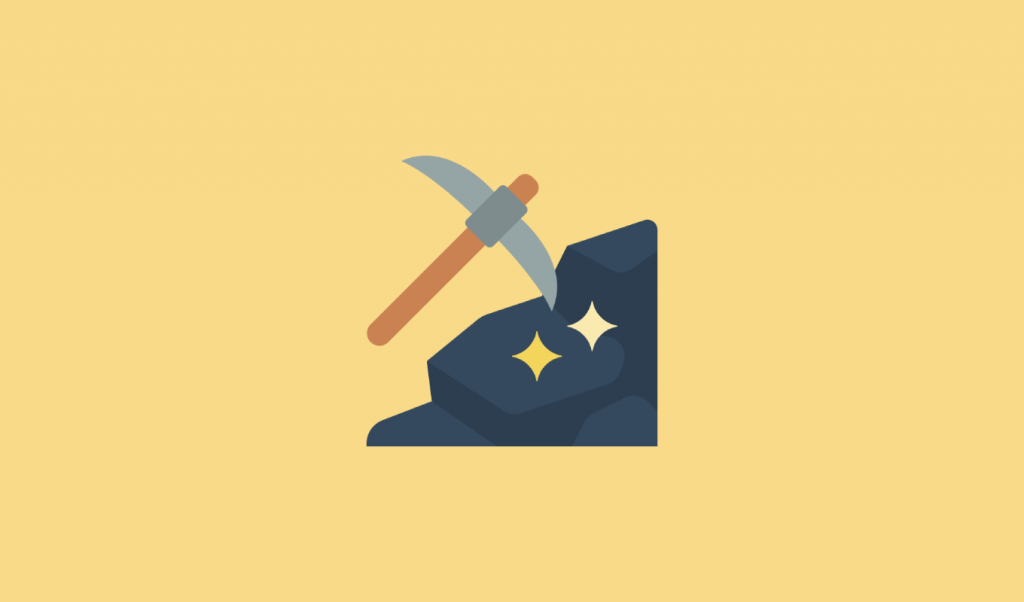Dear Marvin,
I’ve tried making productive plans so many times, but it just never works for me. I always get off track when I make a plan, and whenever I prepare a schedule, it goes to waste the same day I created it.
I’ve suspected I might have ADHD for years, but mental health resources are limited where I live, and I haven’t been able to get an assessment. It’s frustrating because I want to be productive, but traditional productivity advice seems impossible for me to follow. Is there any hope for someone who can’t stick to plans?
✨ Yes! Meet: The Buffet Approach to Productivity
Thank you for sharing your struggles. First, let me say this: you are not broken. The fact that planning and scheduling doesn’t work for you doesn’t mean there is something wrong with you or that you can’t be productive – it just means you need a different approach that works with your brain instead of against it.
There are many ways to approach productivity and there is a framework that doesn’t require you to do any planning or scheduling: I call this the “Productivity Buffet Method,” and it might be exactly what you need.
🧠 Why Traditional Planning Fails Some People
Before diving into solutions, let’s understand why planning doesn’t work for everyone and can even be counterproductive:
🚫 Every deviation feels like failure – When you have a rigid plan, any time you don’t follow it exactly, it can trigger feelings of failure. The more detailed your plan, the more potential “failure points” you create.
📉 The spiral effect of negative emotions – Research shows that these feelings of failure create negative emotions that directly impact our brain’s ability to focus and execute tasks. When we feel bad about ourselves, our brain experiences stress, which inhibits the prefrontal cortex – the very part responsible for planning, decision-making, and self-control. This is a negative spiral.
⏱️ The neuroscience of procrastination – Studies have found that negative emotions push us toward soothing behaviors and quick dopamine fixes (hello, smartphone scrolling!). This creates a cycle: failure → negative feelings → reduced executive function → escape behaviors → more failure.
🔋 Plans don’t account for energy fluctuations – Our energy, focus, and motivation naturally vary throughout the day and can be at times influenced by factors that are not predictable. This can be especially pronounced for people with ADHD.
🔄 Planning requires executive function – The very skills that planning demands (prioritization, time estimation, future thinking) might be what you struggle with in the first place. This creates a frustrating catch-22.
If you were a robot 🤖, planning would be perfect. But you’re human, with shifting emotions, varying energy levels, and a brain that doesn’t always cooperate with arbitrary schedules.
This isn’t a personal failure – it’s neurobiology.
I always say, for most people, the most important approach to improving productivity is to focus on energy and emotional regulation. Time management is usually secondary!
🍽️ The Buffet Approach: Productivity Without Planning
Instead of planning when you’ll do specific tasks, the Buffet Approach offers a completely different paradigm:
Imagine walking into a well-organized buffet restaurant. You don’t decide in advance exactly what you’ll eat or in what order. Instead, the food is thoughtfully arranged in stations, and you choose what looks appealing based on your current appetite and preferences.
Sometimes you want something light, other times you crave something substantial. The beauty is in having appetizing options organized in a way that makes choosing easy.
This is exactly how the Productivity Buffet works. You create an organized “spread” of tasks, neatly arranged by category, energy level, or context. Then, throughout the day, you “graze” on this buffet, selecting tasks that match your current state, energy level, and circumstances.
The key difference from traditional planning is that you never decide in advance when you’ll do what. Instead, you prepare a variety of options and trust yourself to choose appropriately in the moment.
Here’s how to set up your own Productivity Buffet:
📋 Step 1: Collect all tasks in one place
Think of your to-dos not as obligations but as options. Collect everything you need/want/could do in one place – this could be a digital to-do app or even a simple notebook.
The more tasks you are managing the more flexibility you have using a digital to-do app vs pen and paper.
😋 Step 2: Make Tasks Appetizing
Transform vague responsibilities into “tasty” tasks:
✅ Use clear and specific action verbs to start each task (Write, Call, Design, Research)
✅ Break down bigger tasks into small, specific steps
✅ Be specific in describing the task and add subtasks if necessary
✅ Add duration estimates and keep tasks doable in one sitting (5 min, 15 min, 30 min, etc.)
Examples of tasty tasks:
📝 Instead of “work on report,” try “Write introduction paragraph for quarterly report (15 min)”
🧹 Instead of “clean house,” try “Wipe kitchen counters (5 min)” or “Vacuum living room (10 min)”
🖥️ Instead of “update website,” try “Fix broken links on contact page (20 min)”
🌱 Instead of “garden work,” try “Weed vegetable garden beds (30 min)”
📞 Instead of “call friends,” try “Call Mom for weekly check-in (15 min)”
🏗️ Step 3: Organize Your Buffet Stations
Group your tasks by meaningful categories that help you choose what to do based on how you’re feeling.
With the right productivity app you can organize your tasks by multiple dimensions so you don’t have to pick one way to display your tasks.
Here are some powerful buffet organization ideas:
By Energy Level Required:
🔋 High Energy Tasks – Require full focus and mental clarity
🔋 Medium Energy Tasks – Need some concentration but not your peak performance
🪫 Low Energy Tasks – Can be done when tired or distracted
By Task Duration:
⏱️ Quick Wins (under 10 minutes)
⏱️ Short Tasks (10-30 minutes)
⏱️ Medium Tasks (30-60 minutes)
⏱️ Longer Projects (60+ minutes)
By Task Type:
🎨 Creative Work – Writing, designing, brainstorming
📎 Administrative – Emails, scheduling, organizing
💪 Physical Tasks – Cleaning, errands, movement-based activities
👥 Social Tasks – Calls, meetings, correspondence
By Activity:
💬 Communication Batch – All emails, messages, or calls
🏠 Home Environment Batch – Tasks related to cleaning, organizing, or maintaining your space
✍️ Content Creation Batch – Writing, designing, or planning related projects
📚 Learning Batch – Courses, reading, research on a particular topic
💡 Tip: Take advantage of positive energy!
Try to follow your natural energy and excitement. If you feel a spark of enthusiasm for a particular area, that’s valuable fuel for productivity – use it! Following this slight excitement often leads to a state of flow where work becomes easier and more enjoyable.
🎯 Step 4: Narrow Your Options with a Daily Focus
One powerful way to make the buffet approach even more effective is to set a loose “focus” for your day. This isn’t a rigid schedule, but rather a theme or area you’d like to make progress on.
Start your day by asking:
- What area of my life feels most important today?
- Is there anything I feel a spark of excitement about working on?
- What category of tasks would feel satisfying to advance?
Your focus might be “make progress on my website,” “tend to my living space,” or “catch up on communication.” This simple intention narrows down your buffet options significantly, making decisions throughout the day much easier.
Examples of “themes” for the day:
🏠 House Reset Day – Focus on getting your living space in order
🚀 Project Advancement Day – Make progress on a specific project you’re excited about
🤝 Connection Day – Focus on reaching out to people and nurturing relationships
📚 Learning Day – Dedicate time to developing a particular skill
💰 Financial Wellness Day – Review budgets, spending patterns, and money goals
⚙️ Systems Optimization Day – Improve your daily routines and workflows
🌱 Skill Building Day – Practice and develop a specific capability you want to strengthen
☀️ Theme your days
You can also set up different themes for the days of your week. This can be especially helpful when you juggle multiple responsibilities (as a business owner for example) and need a balance.
🔄 Step 5: Match Your Current State to a Task
Once you have your daily focus (or even if you don’t), check in with yourself:
- How much energy do I have right now?
- How much time do I have available?
- What kind of work am I in the mood for?
Then visit the appropriate “buffet station” within your focus area and choose something that matches your current state.
No forcing yourself to do something that feels impossible in the moment!
💡 Bonus Tip 1: Overcoming Decision Paralysis
One challenge with the buffet approach might sound familiar: “But how do I decide what to do first?” This is known as decision paralysis – and incredibly common productivity challenge.
Our brains often waste energy trying to determine the “perfect” order for tasks when, in reality, there is no perfect place to start and we really just need to start somewhere.
Here are some solutions:
🎲 The Task Picker Feature – The Amazing Marvin productivity app offers multiple “task picker” features that selects a task for you (randomly or based on task attributes), eliminating the decision burden on your part
⚖️ The “This or That” Feature – Narrow your choices to just two tasks and force yourself to pick one (also available in Amazing Marvin)
Remember that each decision drains mental energy, so limiting the number of decisions you make in a day helps preserve your cognitive resources for actual work.
💡 Bonus Tip 2: Take off mental weight
It is a good idea to regularly ask yourself: “What is weighing on me right now?” or “What tasks am I really dreading?”. These kinds of tasks can zap your energy constantly while being in the back of your mind. They can also paralyze you to taking ANY action.
It is a good idea to keep track of them and try to get them out of the way to free you up mentally.
💡Bonus Tip 3: The Power of Quick Wins
Struggling to start? One super helpful strategy you can add to your buffet approach is leveraging “quick wins”.
Keep a list of very quick tasks (5 min or less) that you can do when you feel particularly unmotivated. Doing these can help to get some momentum going.
If you struggle to get started even on these tasks, try the procrastination wizard feature in Amazing Marvin, which is designed to help you get started on a task!
When you are struggling to to anything:
- Go to your “Quick Wins” list
- Complete 2-3 ultra short tasks
- Enjoy the dopamine boost of checking things off
- Use that momentum to tackle something bigger
This strategy works because success breeds success. Each completed task, no matter how small, releases feel good chemicals that can help fuel the next task.
Keep a variety of quick win tasks, some help bring you forward on goals, others help maintain your life and others are there to help take care of you.
🛠️ Productivity Tools That Support The Buffet Approach
While any task management system can work for the buffet method, some digital tools are better suited than others:
- ✨ Amazing Marvin – Probably the most flexible option for this approach. It offers:
- Multiple ways to view and filter tasks (by energy, time, context)
- A random task picker to overcome decision paralysis
- A built in wizard that helps you get started on tasks
- A way to keep track of “dreaded” tasks (add a frog to them)
- The ability to easily implement the buffet method while also supporting scheduling for a hybrid approach if needed
- Duration estimates and time tracking built-in
- Many more features designed to support ADHD and procrastination tendencies
- 📋 Trello – Good for visual organization with some limitations:
- Excellent for creating different “buffet stations” as columns on a board
- Easy drag-and-drop interface makes reorganizing tasks simple
- Limited in its ability to support scheduling if you eventually want a hybrid approach
- Lacks built-in features for energy levels or task duration without custom fields
- 📔 Notion – Powerful but requires more setup:
- Highly customizable databases to create buffet systems
- Can filter tasks by multiple properties (energy, duration, context)
- More complex to set up initially compared to a dedicated task managers
- Better suited for knowledge management than pure task management
- Can be overwhelming for beginners
The key is finding a tool that makes it easy to filter and view your tasks from different angles without forcing you into a calendar-based approach (unless you specifically want that option available).
💗 Final Thoughts: Compassion Over Discipline
The most important part of this approach is to remove judgment from your productivity system. There’s no “failing” at the buffet method – you simply choose what works for your current state.
Remember:
- Your worth isn’t measured by productivity
- Working with your natural tendencies is smarter than fighting against them
- Small progress consistently beats perfect plans that never happen
- Following slight excitement often leads to greater productivity than forcing yourself through “shoulds”
Using this approach, you may find that you accomplish just as much (or more) than you would with rigid planning, while experiencing far less stress and negative self-talk along the way.
💌 I would love to hear from you
What are your thoughts? Have you tried something similar, or do you have questions about implementing this approach? Let me know in the comments!
Also published on Medium.



